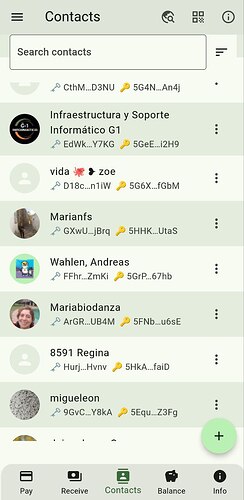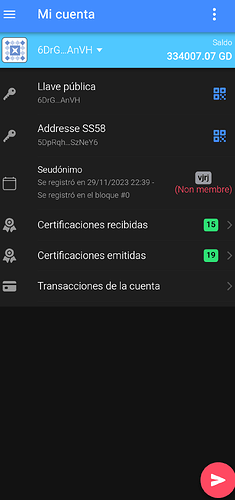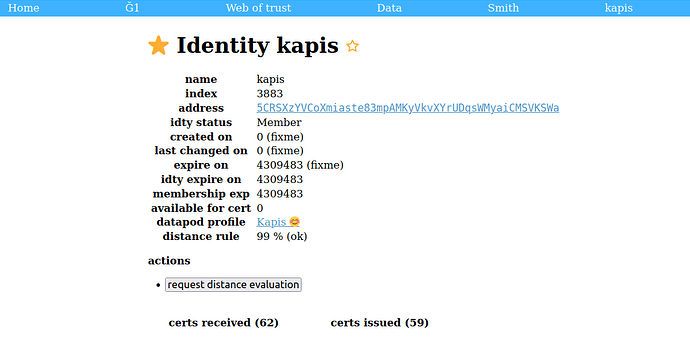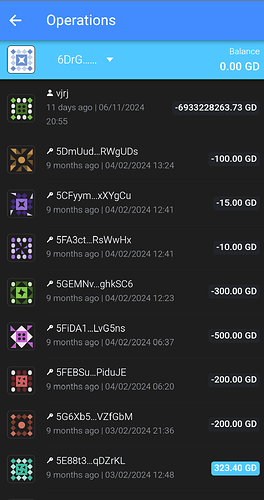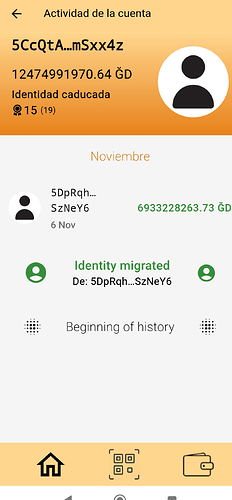I’m making a lot of progress with v2 support in G1nkgo and trying to support v2 gradually while maintaining v1 by finding time here and there on weekends and late-nights.
When I first tried the current v2 clients, I got a bit confused when using my main account. The lack of the classic avatars at the time, or the use of a new address (and not my classic v1 public key), not to mention the bip39 support only in English (a topic that has been discussed in this forum), confused me a lot.
My ideal is that the transition to v2 for the people in our community (“humans”) is as simple and transparent as possible. Basically that everything should work the same or better for them, faster, more robust and that there are not many difficulties, migrations, etc. That’s why I’m trying to support v2 in the same g1nkgo code and with the same user interface simultaneously.
There is one topic I want to talk about now, mainly, and it is the topic of public keys (the ones that were displayed in v1) and addresses derived from v2.
The people in my community have their public keys memorized, they have them printed and laminated in their markets, etc. Sometimes people use that pubkey to distinguish themselves from others (if they have very common names), and sometimes they have only simple wallets (people who do not want to be certified despite everything) and they always come with their public key written down.
Changing those public keys for those people would be a bit catastrophic, like changing my mother’s phone numbers and address book or changing her TV channels :-). So my proposal is to continue using the public keys from v1 and the new addresses from v2 transparently. I don’t know if this was discussed before, sorry.
In g1nkgo, right now, you can enter contacts, or search for people, or scan qrs with both (public keys from v1) and with others (5xxx addresses from v2). [1].
sin mucho esfuerzo
In this screenshot I show a part of my contacts with old/new keys. I would even like to only display the v2 address on new accounts (created after some date or similar) and the old key on accounts created in v1. Two keys is confusing.
In this sense I am not going to migrate any old g1nkgo wallets o (cesium v1 ones), those wallets will simply continue to operate with the v2 nodes using the v2 addresses while their v1 public key will be displayed. And the new created wallets will operate with the new v2 addresses and will be known as such. Or this is my goal, I think is technically posible.
I would like the rest of the clients (gecko/cesium2) to do something similar, to avoid confusion for our community. I was talking this weekend with @kapis and he liked the idea and I think he’ll try to do something similar in superbot.
Thanks and sorry for the length.
Bests,
[1]: Here is a snapshot of G1nkgo that I had no time to finish and stabilize this weekend so it’s not ready to publish it but it’s ok for some tests. See the switch:
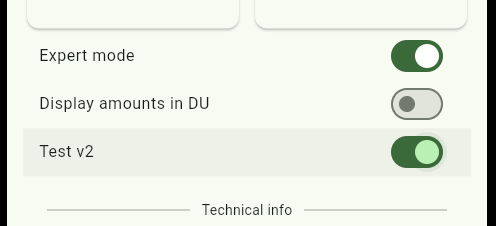
and try to do some searches with different keys.
Update: Sorry I’ve just updated the snapshot with a more recent one
